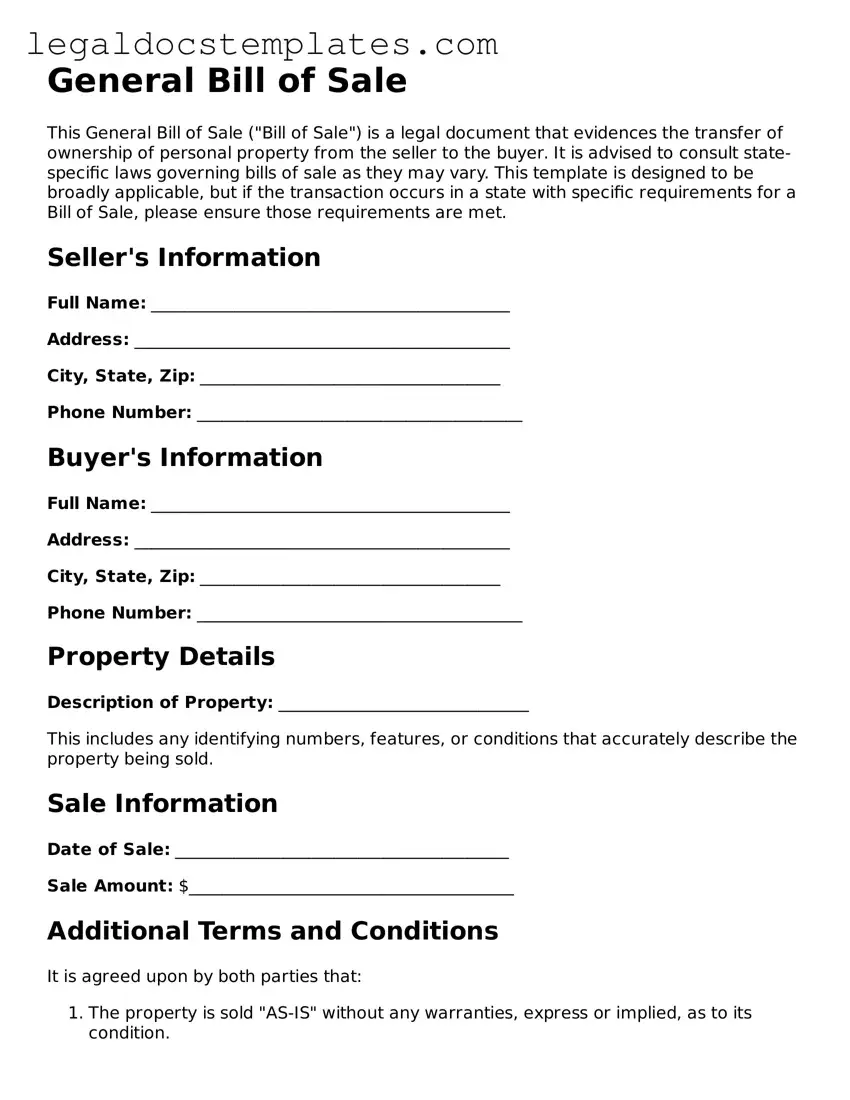A Warranty Deed is similar to a General Bill of Sale in that both serve as legal evidence of the transfer of ownership. A Warranty Deed is specifically used in real estate transactions to guarantee that the property title is clear and the seller has the right to sell the property, offering more protection to the buyer than a General Bill of Sale typically does for personal property transactions.
An Assignment Agreement shares similarities with a General Bill of Sale by facilitating the transfer of rights or assets from one party to another. This type of document is often used in business contexts to assign contractual rights or responsibilities, whereas a General Bill of Sale is commonly employed in the sale of goods or personal property, without the transfer of contractual obligations.
A Quitclaim Deed, like a General Bill of Sale, is a document used to transfer interest in property. However, unlike a General Bill of Sale which can cover various items, a Quitclaim Deed is used specifically for real property. It transfers the seller's interest to the buyer without warranties, meaning there is no guarantee against claims on the property, making it a less secure option than a Warranty Deed.
A Promissory Note can be likened to a General Bill of Sale because it represents an agreement between parties regarding the exchange of value, with a Promissory Note documenting a commitment to pay a debt under specified conditions, whereas a General Bill of Sale confirms the transfer of ownership of physical goods or personal property from a seller to a buyer.
Vehicle Title Transfer forms are closely related to General Bill of Sales in their fundamental purpose of transferring ownership. The key difference is that Vehicle Title Transfer forms are specifically designed for the transaction of vehicles and often require additional information such as odometer readings and VIN numbers, which are not typically detailed in a General Bill of Sale.
A Purchase Agreement shares similarities with a General Bill of Sale as it outlines the terms and conditions under which a sale will take place and transfers ownership of goods from seller to buyer. However, Purchase Agreements are more detailed, often including provisions for financing, inspections, and contingencies in real estate transactions or large personal property purchases.
A Receipt of Payment, like a General Bill of Sale, serves as proof of a completed transaction but focuses on the payment aspect. It acknowledges that the buyer has paid the seller the agreed-upon amount for the goods or services, acting as a simple confirmation of payment, whereas a General Bill of Sale provides evidence of the transfer of ownership.
A Consignment Agreement is somewhat similar to a General Bill of Sale in that it involves the transfer of goods. However, instead of transferring ownership like a General Bill of Sale does, it grants a consignee the right to sell goods on behalf of the consignor, with ownership transferring directly from the consignor to the eventual buyer upon sale.
A Stock Certificate is akin to a General Bill of Sale in its function of evidencing ownership. While a General Bill of Sale documents the sale and transfer of ownership of personal or physical goods, a Stock Certificate represents ownership of shares in a corporation, serving as legal evidence of stock ownership.
Last, a Business Sale Agreement is related to a General Bill of Sale as both are used in the sale of assets. A Business Sale Agreement, however, is more comprehensive, detailing the sale of a business as a whole, including its assets, liabilities, and operations, unlike a General Bill of Sale, which typically covers the sale of individual or multiple physical items.
